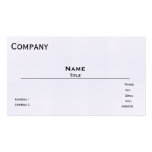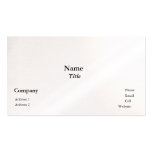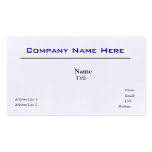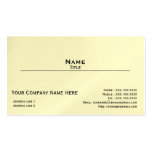7 Ways to Write Killer Calls to Action
What’s the most important part of your content?It could be your call to action.
A call to action does more than just direct your readers toward a certain action – it can also help you make more sales, increase reader engagement and produce more conversions.
If you’ve been struggling to write great calls to action, take a look at these tips.
7 Ways to Write Killer Call-to-Actions
1. Use command verbs
Nobody wants a warm-water CTA. Iffy CTAs don’t produce responses and they make your entire post feel weak and wishy-washy. In order to avoid this, don’t beat around the bush with your CTAs. Instead, start them off by being direct and straightforward. This is especially important due to the fact that CTAs are short by nature, which means that you don’t have a great deal of space to get your point across. That said, if you run an eCommerce site, try using words like ‘Shop’ or ‘Buy’ at the beginning of your CTA. If you’re trying to get users to tap into your content, use words like ‘Download’ or ‘Subscribe.’ If you’re trying to introduce readers to your sales funnel, start with words like ‘Find out more…’ or ‘learn more…’ People respond to strong, actionable language and these phrases and words leave no questions about what you want your readers to do. As such, they’re effective and to the point.2. Use emotive words
Want your readers to be excited about your CTA? Well, you’re going to have to give them a reason. With this in mind, use words and phrases that make your audience feel enthusiastic. Creating a sense of urgency is a great way to do this. That said, anything with ‘Buy now!’ or ‘Act fast…” is a winner. You can also provoke enthusiasm by offering a discount, like 50 percent or something similar. To add a little extra excitement, consider adding an exclamation point (but only one, because any more than one make you seem like a schoolgirl with a crush, and we don’t want that). Emotive words are a powerful way to make your readers feel excitement and lend authenticity to your CTA.3. Give your audience a good reason
Why should people click? If you can’t answer that, you’re in trouble from the get-go. What will clicking your CTA do for them? Will it help them save money? Lose weight? Be more productive? Get a great value? Whatever the benefit of your CTA is, you’ll need to clearly outline that in order to produce the desired response from your readers. This involves playing up your unique selling proposition (USP).A USP is essentially the thing that makes readers want to click your CTA rather than your competitor’s and it is arguably one of the most important aspects of the entire CTA. To write a great CTA with the USP in mind, you’ll have to do two things: tell the user what you want them to do (‘click now,’ for example) and tell them what they’ll get when they do (‘for 50 percent off our newest product’). The combination of these two things makes for a great CTA every time.
4. Play up the FOMO
FOMO (fear of missing out) is a powerful driving factor for people choosing whether to click a CTA. Although it’s become a modern-day buzzword, FOMO is actually rooted in science. FOMO is the feeling that a person is missing out on something great or exciting and, when applied to a marketing tactic, can cause people to leap at an offer or make a purchasing decision.One of the best ways to leverage the power of FOMO in your CTAs is to give your customers the impression that they’re going to miss an opportunity if they don’t act fast. This may mean advertising the quantity left for a certain product or offering a clock that ticks down toward the end of a sale or promotional offer.
To put a unique spin on the power of FOMO, consider presenting customer reviews that help customers see the value of your product, good or service and then make the service scarce with phrases like ‘Only X Seats Left!’ or ‘Buy now! Sale ends Thursday!’ Making anything time-sensitive and scarce increases its value hugely. This phenomena is known as the “science of scarcity,” which essentially means that people value a thing more when it’s scarce than they do when it’s abundant.
5. Master the devices
Right now, 51 percent of shoppers are using their mobile phone to browse online and you can bet that they’re looking for instant gratification. With that in mind, make sure that you’re optimizing your CTA for mobile platforms. To do this, take advantage of the fact that Google allows users to set mobile preferences for ads and that companies can display a phone number alongside ads. This is important for making your CTAs effective for mobile users and will greatly increase the effectiveness of your CTAs.6. Use numbers
Numbers are appealing to the human eye and, when presented with a series of numbers that represent pricing, discounts, incentives or time left, people respond more quickly and more strongly. That said, write ‘50%’ instead of ‘fifty percent.’ This simple trick will make your promotions more effective and will help people respond to them more quickly.7. Use unique language
This is solely for the purpose of grabbing attention and letting your character shine in a CTA. Instead of saying ‘Click here for help with SEO’ try writing something like ‘Your SEO game sucks. Click here for help.’ The second CTA has much more character than the first and will stand out to people more.CTAs are an important part of an effective blog post. In order to make them work well for you, follow these seven tips to simplify your CTA formula and reach your customers throughout your entire marketing career.







This is very useful information for me. Thank you very much! Look art history topics research papers for your perfect essay.
ReplyDelete